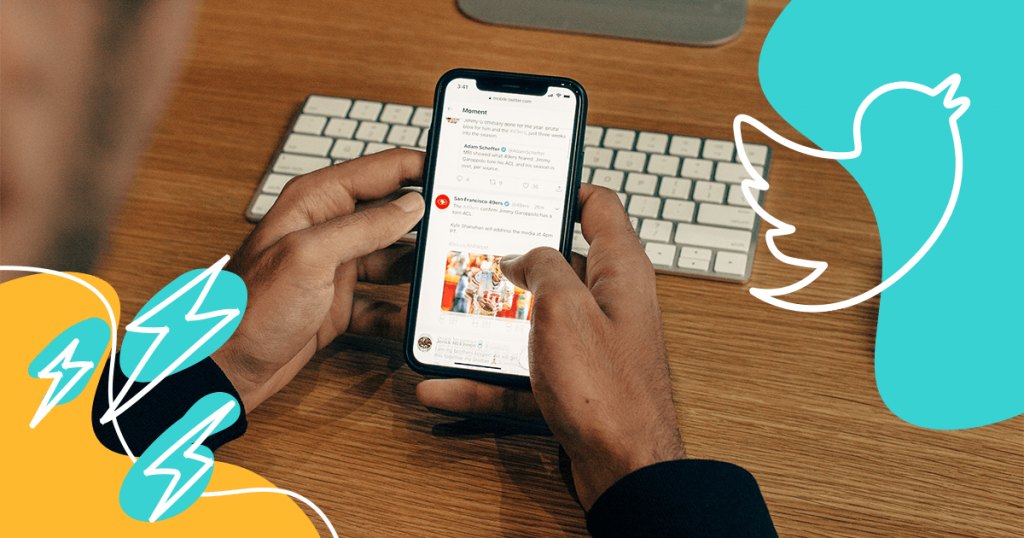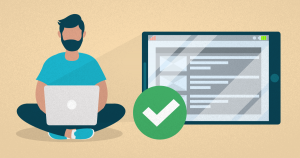When it comes to social media channels, Twitter continues to compete with the best of them.
It’s also serving as a boon for businesses everywhere, thanks to its upgraded analytics capabilities.
So, if you’re not already looking at your account metrics on Twitter, you’re leaving potential behind.
By utilizing what Twitter Analytics has to offer, you not only learn which types of tweets are getting the highest engagement but also get to know your audience better.
One metric to focus on, in particular, is your Twitter Impressions.
By understanding and tracking your Twitter impressions, you can see how much screen time your tweets are getting.
Combining that with other metrics, such as reach and engagement, you can find new ways to improve your content marketing strategy to boost results.
Ready to know more?
- What are Tweet Impressions?
- How to Measure Your Impressions on Twitter
- 5 Best Strategies to Boost Impressions
- Wrap Up: Increase Your Brand Presence by Boosting Twitter Impressions
What are Tweet Impressions?
Twitter Impressions are a valuable indicator of brand presence.
Essentially, they are the number of appearances your tweet makes on user timelines.
At the most basic, Twitter Impressions are the number of times your tweet is shown to people across the platform.
This number isn’t limited to just your followers, however. It can be reached by a specific hashtag or through Twitter search.
For example, if 100 followers see a tweet, the tweet has already resulted in 100 impressions. It doesn’t matter whether they interact in some way with your tweet or not.
So, why should you care about your Twitter Impressions?
Twitter Impressions inform you as to whether or not your tweets are relevant to the targeted audience.
If tweeted content is relevant to your audience, then it has a higher potential for being shared, and that can boost your brand’s presence.
Twitter Impressions can also give you insight into the quality of your audience and gauge how well your Twitter digital marketing strategy is working.
Twitter Impressions vs. Reach
Another important Twitter metric is your reach or exposure on the platform.
Reach refers to how many viewers can potentially see your tweet. This number can extend far beyond those who follow you, reaching all those who follow your followers as well.
For instance, if you have 2,000 followers, your reach starts at 2,000.
To further calculate your total reach, add to this 2,000 any follower who retweets your tweet and the number of followers they have, and how many of them see the retweet.
When thinking about the difference between Twitter Impressions and reach, note that impressions focus on actual performance while reach is about the potential.
Why is this important?
By knowing your reach, or Twitter exposure potential, you can better adapt your social media strategy and craft annual goals that are more in line with the possibilities.
Twitter Impressions vs. Engagements
A high engagement rate with your tweets is your goal on Twitter.
Whether the engagement is in the form of likes, retweets, or clicks, the rate results from whatever way someone interacts with your Tweet.
This rate is easily calculated by dividing total engagements (those likes, retweets, and clicks) by total impressions.
The best-case scenario is to have a high number of impressions and a robust engagement rate.
How to Measure Your Impressions on Twitter
To view tweet activity and performance, go to your Twitter Analytics Dashboard.
Here you can find data on both organic and promoted impressions as well as on the individual tweets themselves, all with the ability to filter by date range.
Another option is to enlist the help of social media analytics tools, such as TweetReach, Twitonomy, and Keyhole.
Overall, the common measure for what is a good impression rate, meaning your targeted audience favors your published content, is about 20-25% as compared to your number of followers.
5 Best Strategies to Boost Impressions
Once you realize the importance of impressions, you can improve your Tweets to better match with your target audience at various stages along their buyer’s journey.
Try the following five best strategies to boost impressions on Twitter.
1. Be Consistent in Tweeting Content
Content is the key to finding your audience and enticing them to engage with your brand.
While you want to focus on brand-related content, the majority of what you Tweet about needs to be non-branded, such as educational content and industry news.
For best results, start by getting to know your audience. What are their main interests? Which Tweets receive the most attention?
Your Twitter Analytics dashboard provides information on viewers’ interests, which can be anything from technology to entrepreneurship to finance.
Focus on whatever you find, at least to start; then, you can adjust and adapt your content strategy as you learn more and more about the wants of your audience.
Also, look for correlations among the top topics, styles, and length of Tweets. Experiment with similar correlations.
Once your find the right content types for your particular audience, make sure you remain consistent in your posting schedule. Don’t give followers time to forget your brand but instead, keep engagement potential up by tweeting often.
The Twitter algorithm will notice if engagement with your tweets decreases, and your Tweets may not be shown as a result.
2. Utilize Efficient Hashtags
Hashtags are a highly useful tool on Twitter, so spend time discerning which ones will work best for you.
These hashtags can introduce you to entirely new audiences interested in what you have to offer.
Users of the platform will conduct a search on specific hashtags, and that could lead them to you and increase your impression rate at the same time.
Every digital marketing plan needs to factor in a Twitter hashtag campaign or two.
To help you identify the most useful hashtags for your brand, consider using a third-party analytics tool like TweetReach, Keyhole, Twitonomy, RiteTag, Mentionmapp, and Hashtagify. These tools offer a free and paid version.
3. Devise the Right Tweeting Schedule
The web today, including all the social media channels, is chock-full of information and data to the point of being overwhelming.
You can still reach your targeted audience through all that noise, and one way to accomplish this is to devise the right tweeting schedule.
In other words, by posting at certain times, you increase the chances of that tweet being seen, which means you’ll increase impressions.
While each social network can differ when it comes to the best times to reach an audience, the consensus of marketers and researchers lean toward mornings and late nights for posting a tweet.
However, the optimal time to post your tweets is whenever your followers tend to be the most active on Twitter. To find out when this is, use Twitter analytics tools.
Once you learn the times, schedule your tweets strategically to make sure they get in front of your audience.
4. Tweet Rich Content
Get creative in how you present your content to your audience.
Tweets including videos, graphics, or photos, and even those with inserted links (which often generate a preview image), fare extremely well when it comes to attracting the attention of followers and potential followers.
With the use of such rich media, you can increase your overall Twitter Impressions.
For all of your branded content, reconsider your strategy and focus on ways to improve your message and the way you present it.
Also, optimize images in your blog posts so that when you share them on Twitter, they are more enticing.
5. Make Engaging with Followers, Brands, and Influencers Part of Your Strategy
To increase impressions, start engaging more with your followers, other brands, and influencers.
With your followers, engage in a variety of ways, such as answering their questions, thanking them for good comments, and for sharing an experience with your brand.
In other words, humanize your approach. Let your followers know you are listening. Make them a priority.
Also, find other brands that you can interact with on a regular basis. By doing so, you may find their followers coming over to see what your brand has to offer.
Next, seek out influences to interact with in a variety of ways.
To find influencers on Twitter, you may want to utilize the free analytics tool Klear. This tool tracks the most influential accounts on Twitter, allowing you to identify who is making an impact on the different types of topics.
Once you find them, initiate a conversation and begin building a relationship. Like and comment on their tweets, and eventually, ask for mentions and retweets.
The more you engage with others, the more you build brand awareness, and the higher the number of impressions you will experience.
Wrap Up: Increase Your Brand Presence by Boosting Twitter Impressions
Twitter Impressions show you how many people are seeing your tweets and can play a significant role in increasing your overall brand presence.
For this reason, it’s worth your time to monitor and improve Twitter Impressions to grow your Twitter marketing campaigns.
While these impressions are important, they can also work best in tandem with other metrics to better your brands’ presence on Twitter, such as your reach and engagement rate.
For more ways to optimize your social media marketing strategy, check out our blog post!








